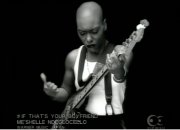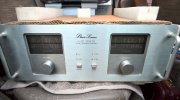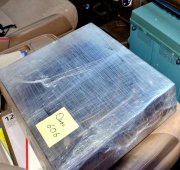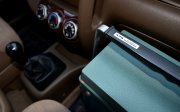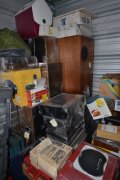NeverSatisfied, thanks for the words of encouragement! You know, looking at the big picture of how the audio hobby has changed over the past 40 years, I am particularly interested in solving a couple of today's problems that Bob Carver (or anybody else back then) didn't know were lurking way over the horizon in the future.
One problem is the sheer amount of RFI in today's world, (Radio Frequency Interference) thanks in part to the race to the bottom with cheap wall warts, light dimmers, noisy solar panels, and the like. Check this out, back in the day some coding guru, using precise timing loops to stimulate digital address & data lines at musical note rates, turned a computer room
12-bit computer (DEC PDP-8) into a RFI music box that could be listened to with a handheld AM radio. (Note: I think the original coder did it just for the personal challenge, but the program had earned word-of-mouth status in the community, & running this program as a demo for why my students should learn more about our company's
Tempest offerings was very persuasive.)
In English, just because in the mostly all analog households in the '70s Bob Carver didn't have to worry about the hurricane of RFI surrounding us today (both radiated over the air + the stuff injected into the power mains) ...doesn't mean that I don't have to. Part of the reason I can justify in my mind the use of the 200Mhz Tek 475 o-scope is that I'm going to do my very best to clean up the incoming power & pay attention to whatever shielding I can implement along the way. (I've actually budgeted as long as it takes to ensure real cleanliness in this area.)
****
Of course there are those that would argue that a vintage quasi-complementary Class B consumer amp isn't worth this level of RFI sleuthing.
But Grapplesaw & others have already convinced me to convert/upgrade to a fully-complementary output stage, and I am also going to spend some quality time (down the road, post WOPLing) trying to figure out if the Blomley circuitry can mitigate the remaining Class B notch distortion.
In other words, I am going to pay close attention to the original noise floor AND at the same time defend against today's RFI environment so that all the other distortion-mitigating upgrades will remain audible. (by their absence. :0)
PS - I originally got interested in this RFI stuff because back in the day I would (try to) take a nice-sounding consumer-grade AM/FM receiver from home & into the raised-floor computer lab where I was spending so much time...and it was unlistenable due to all the hash! (And it wasn't until much later when I was working with airborne radar systems that I saw what they did to keep the RFI gremlins at bay.) But that's what retirement is all about -- I'm going to go
full-on Don Quixote at the RFI windmills I've described above. ;0)
If you haven't already followed the computer RFI music box link above, please do so. (Best part of demo = 3:00 on) Then you can better understand my focus in this area. Enjoy!

